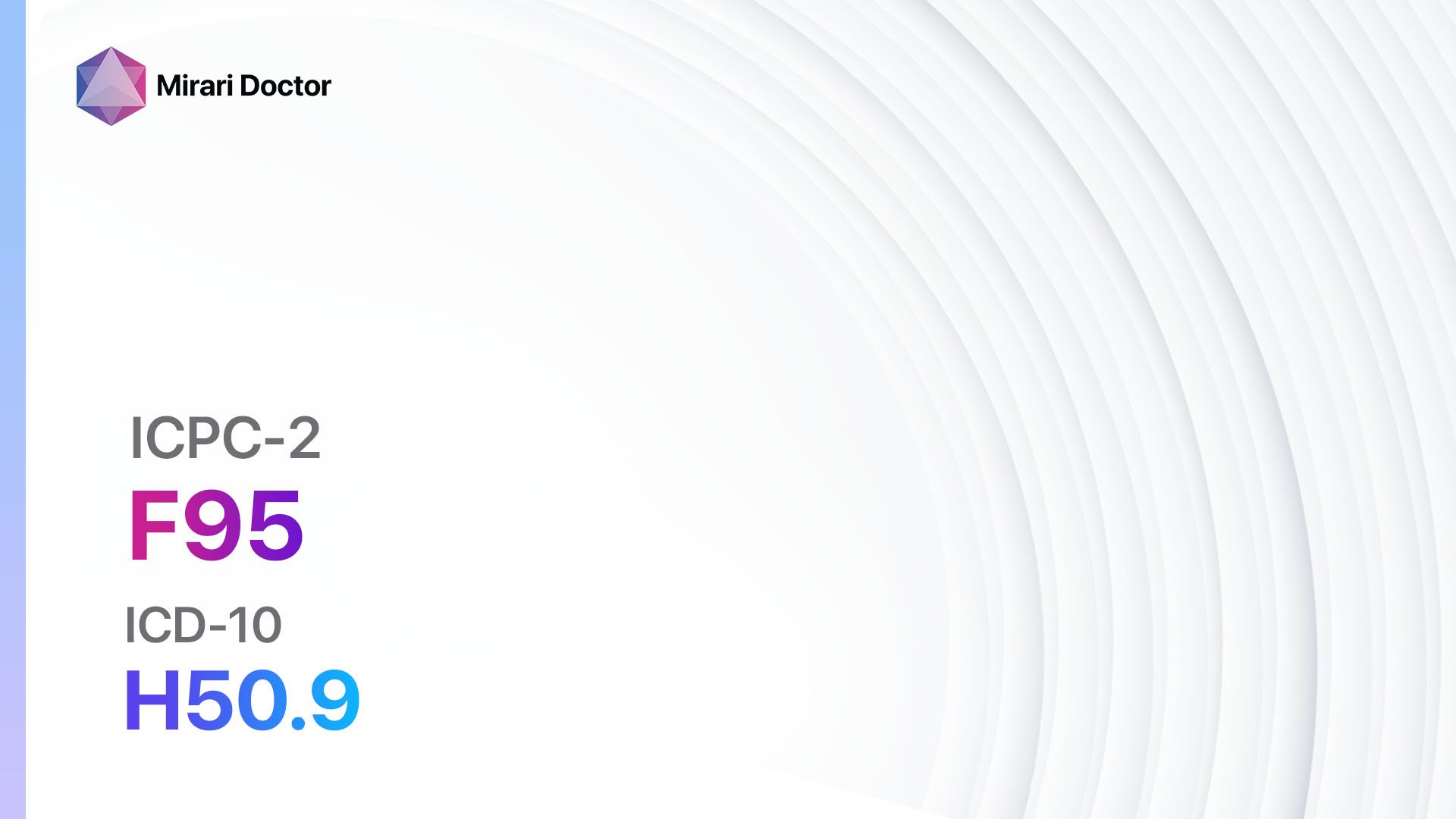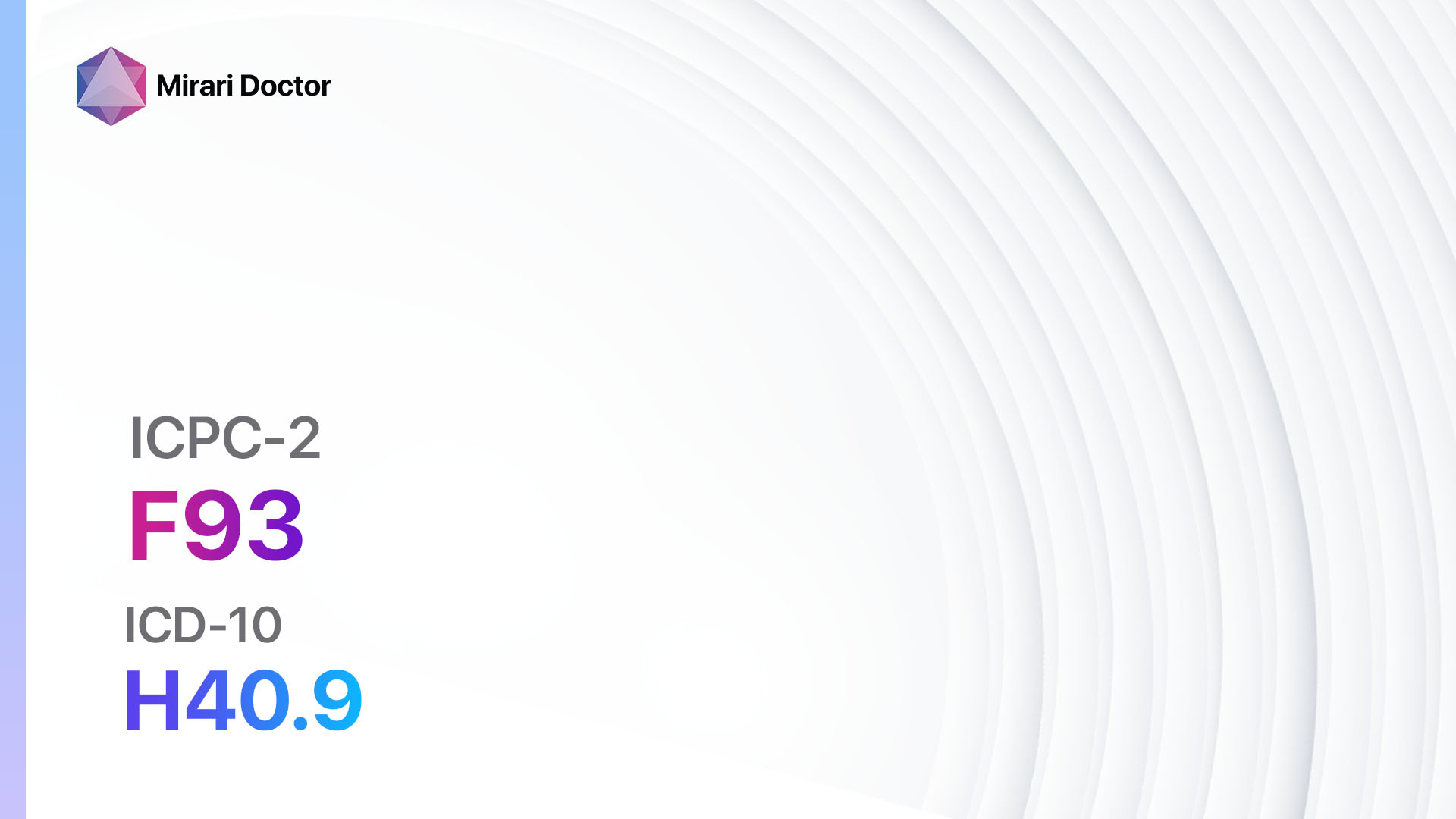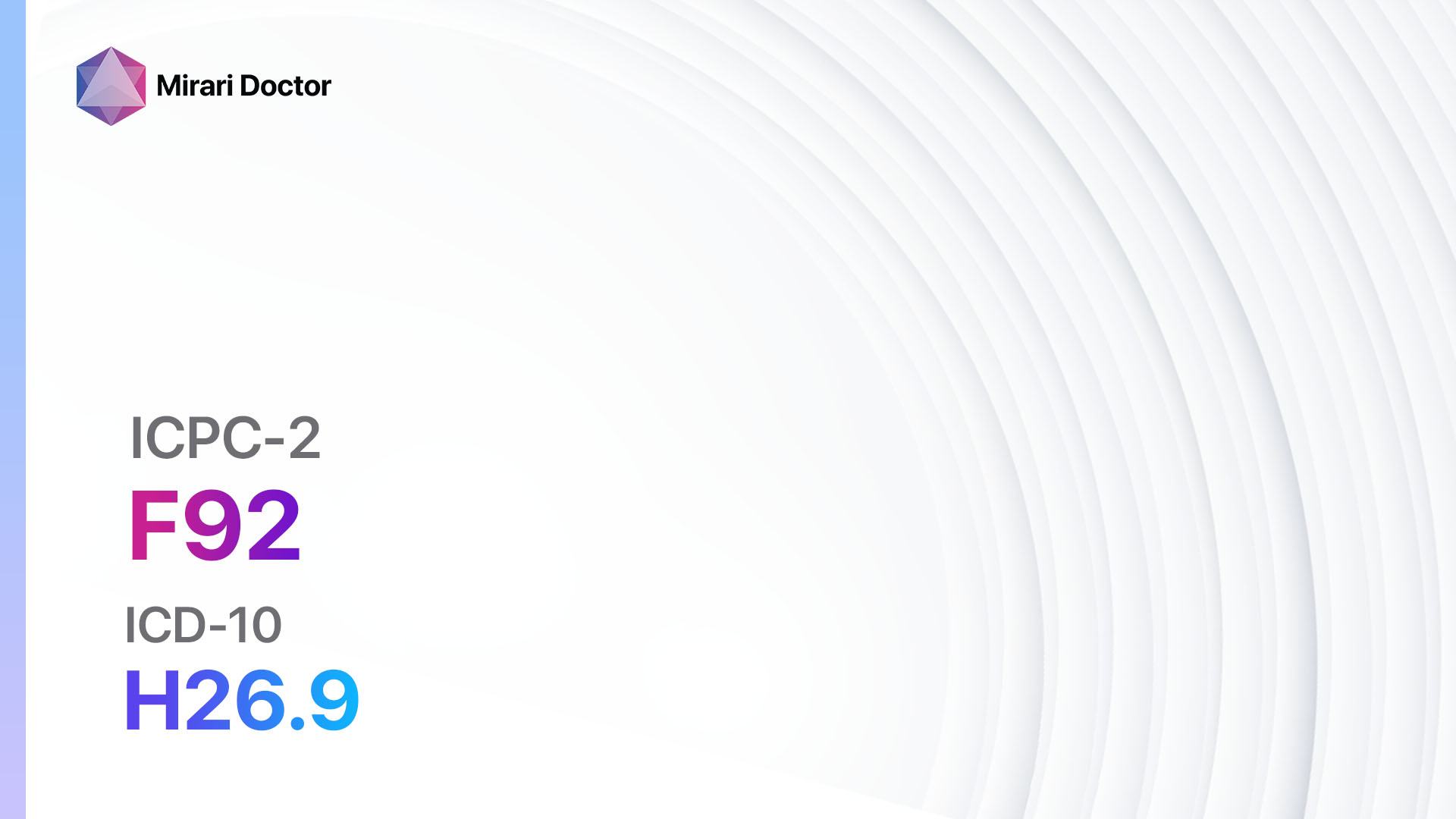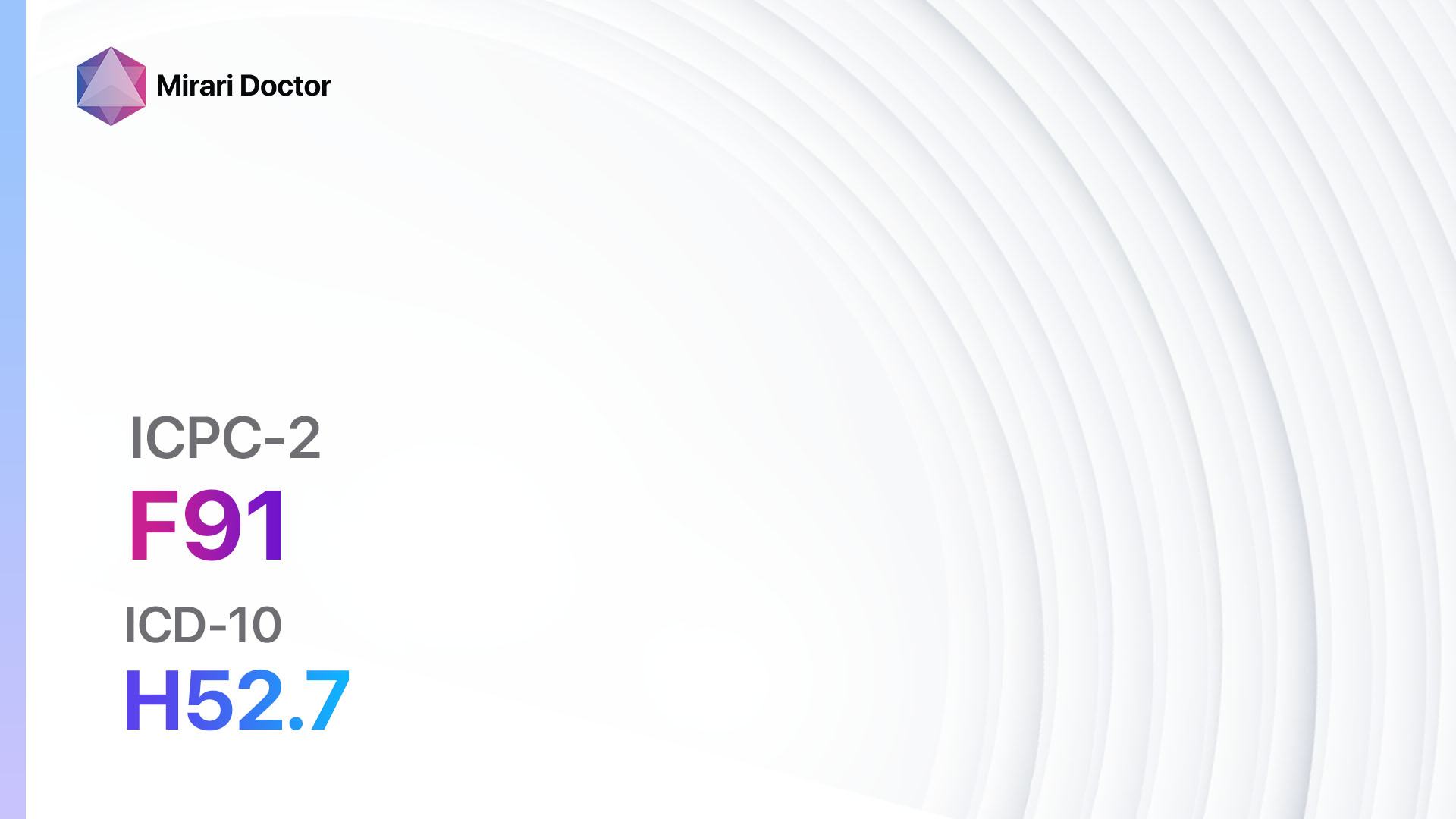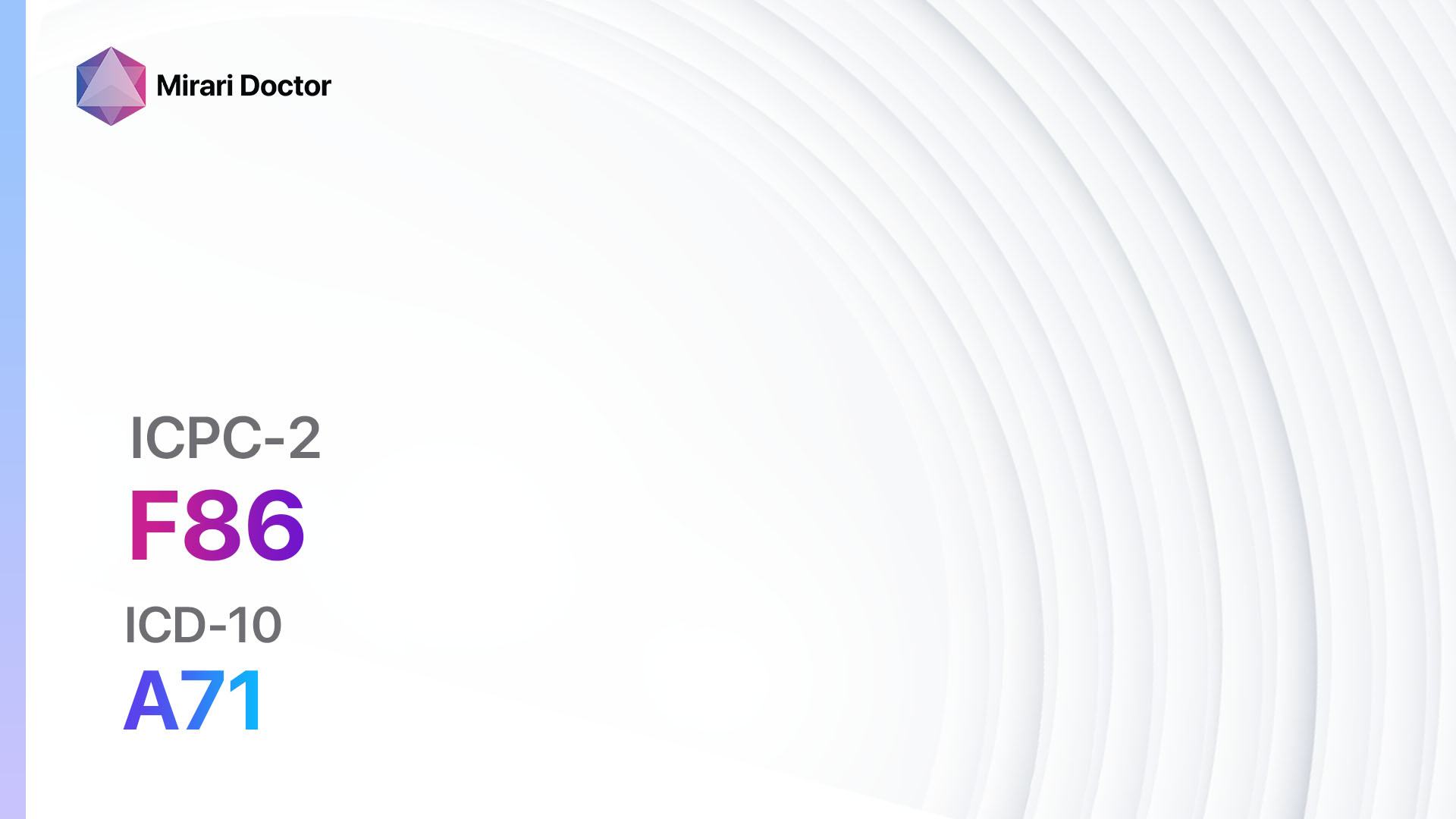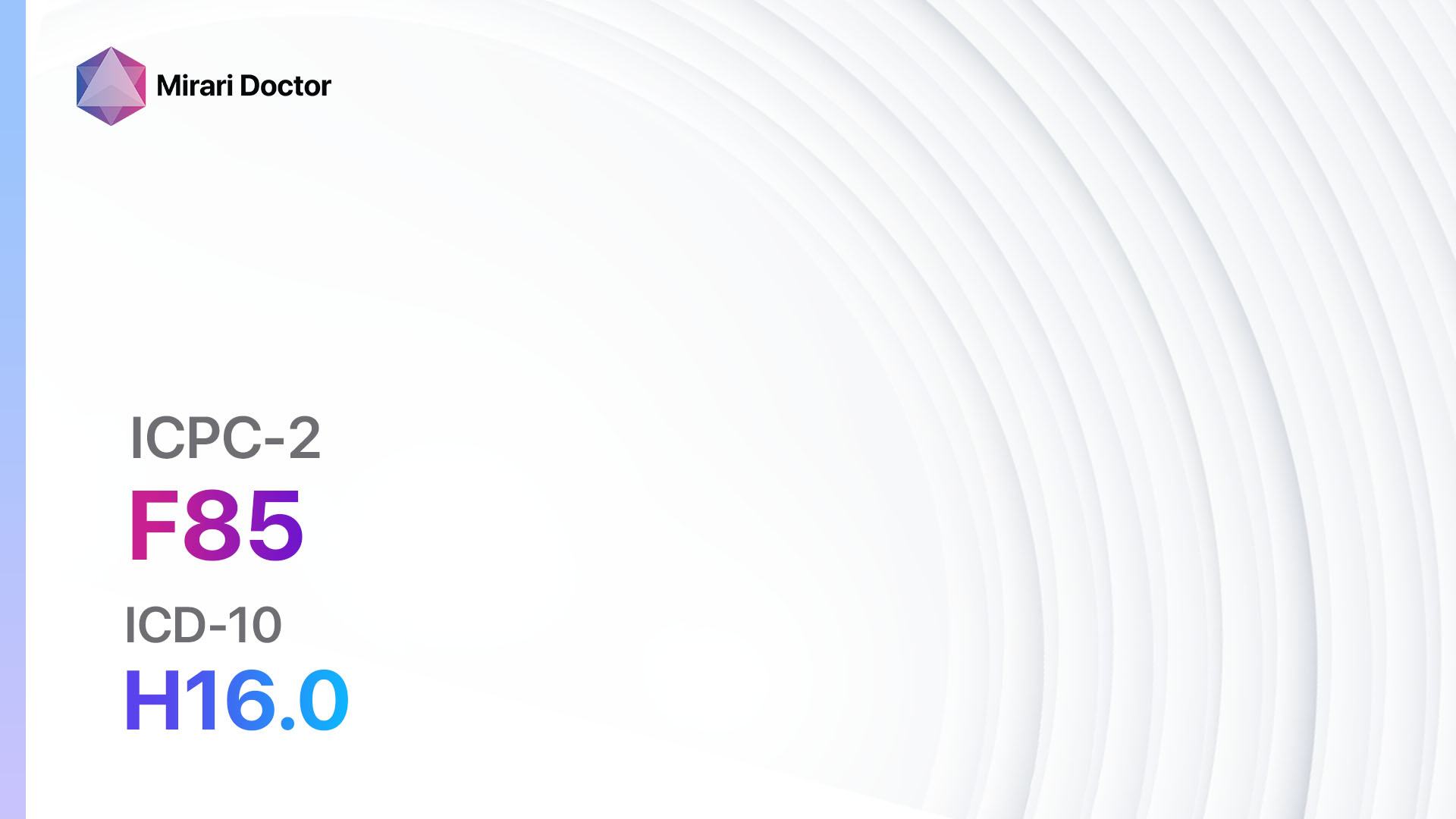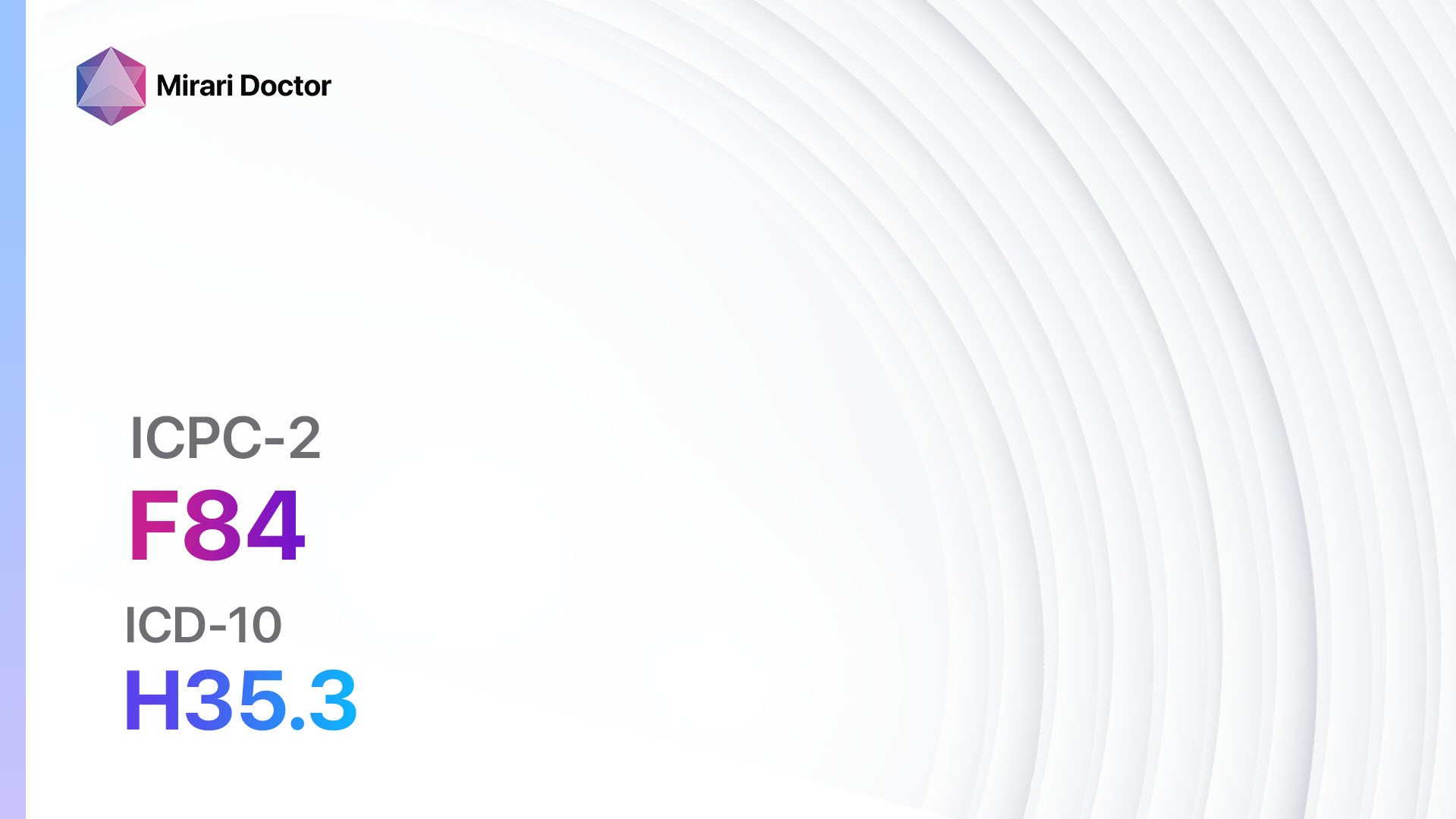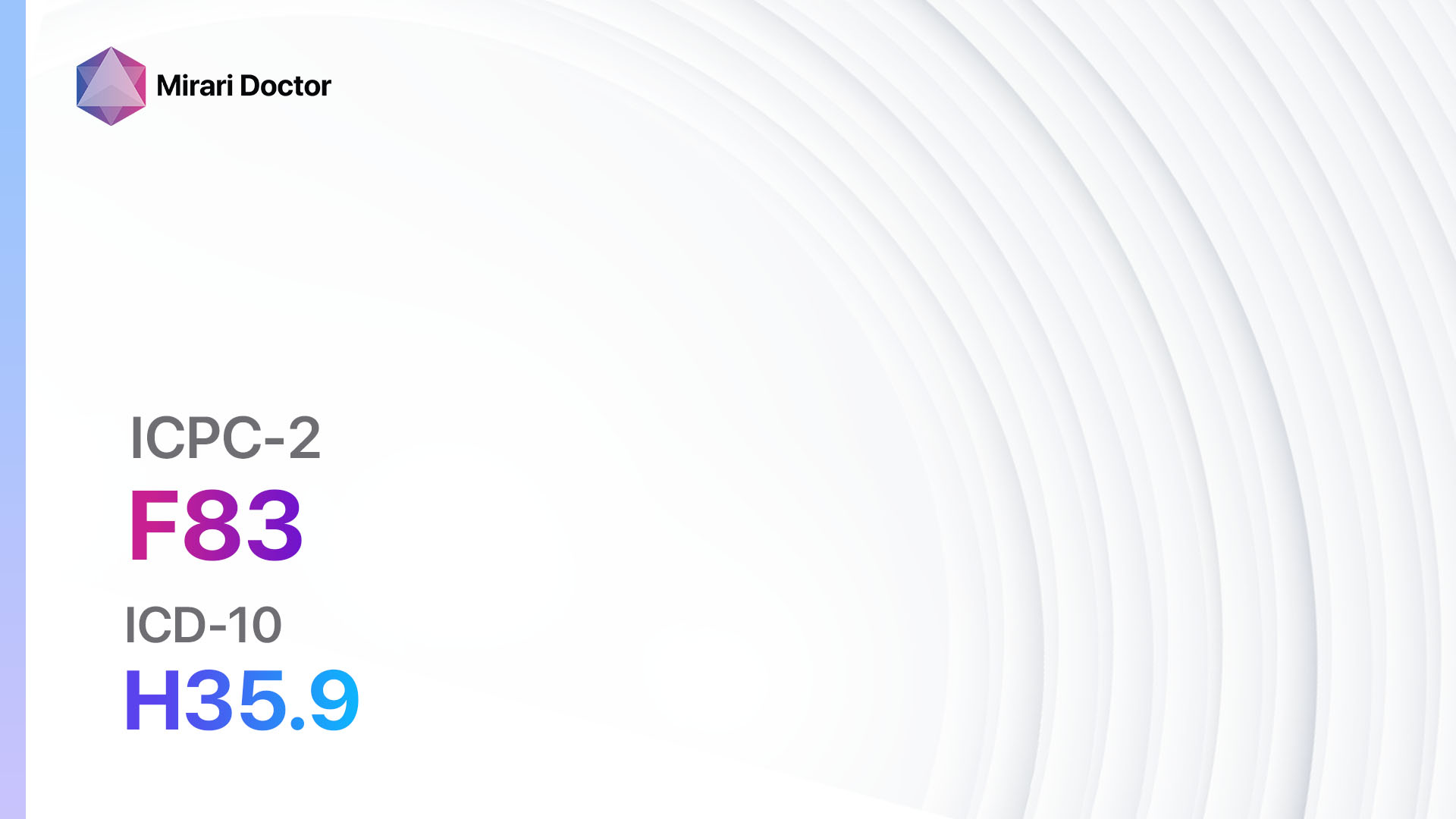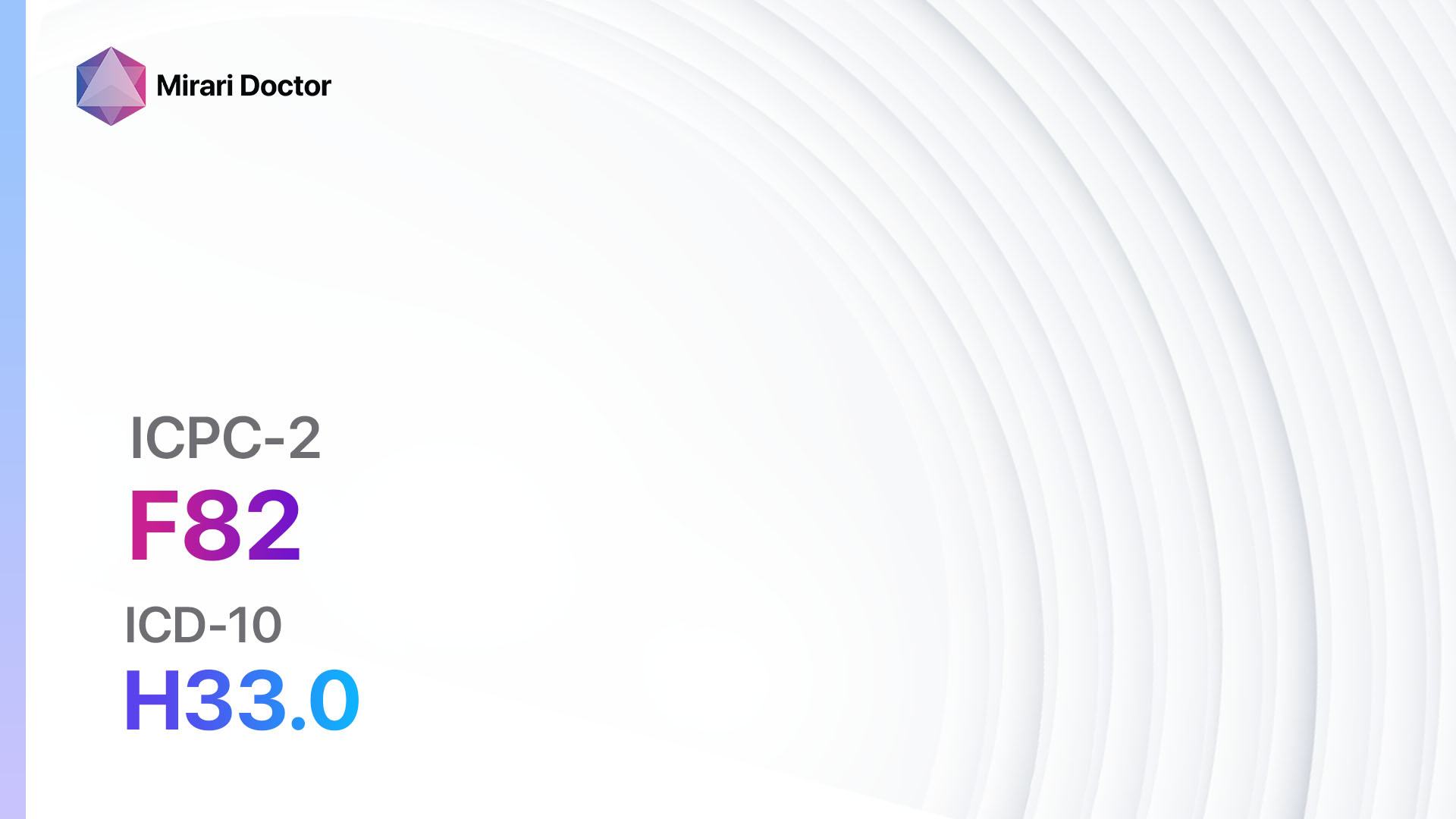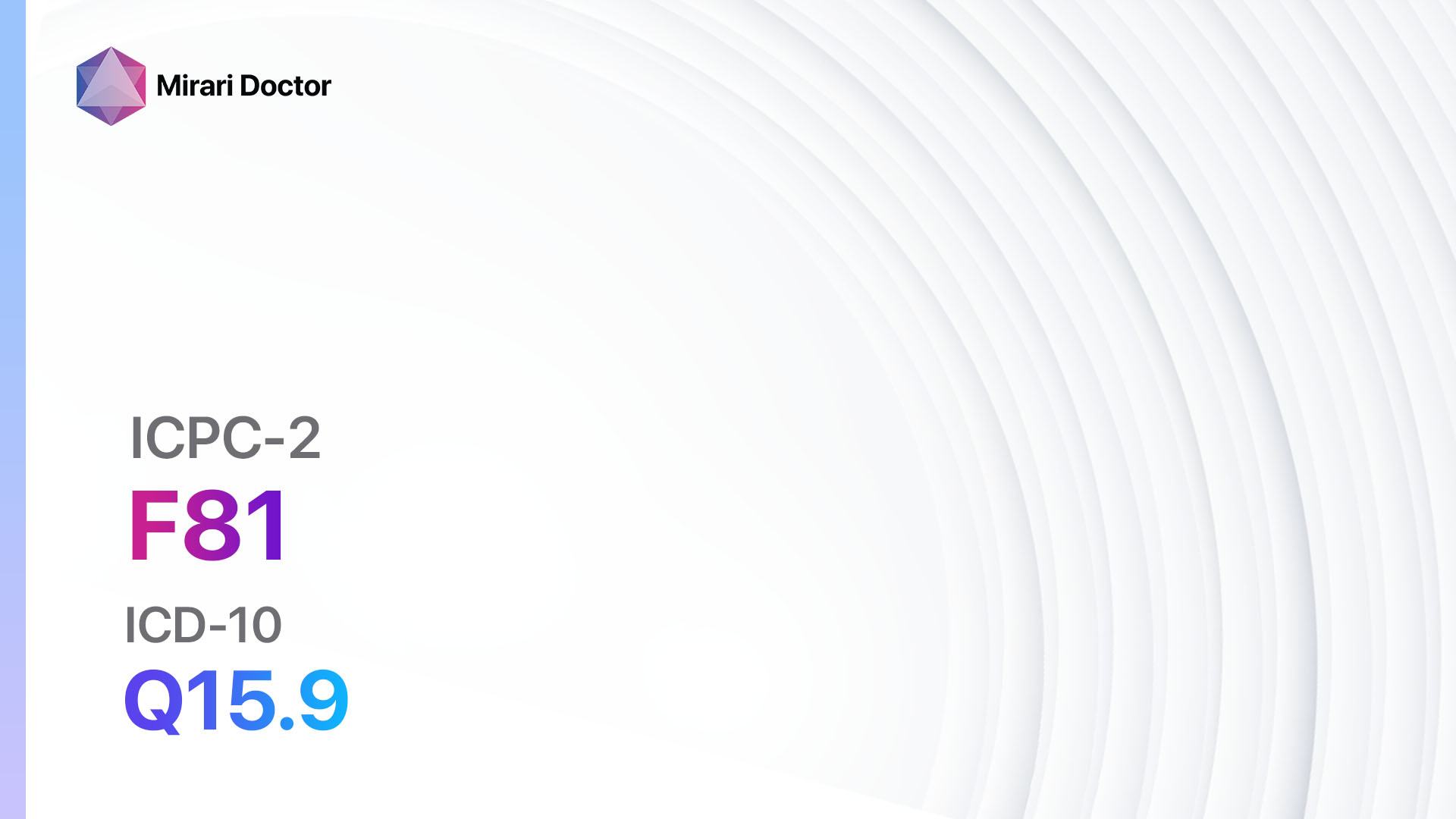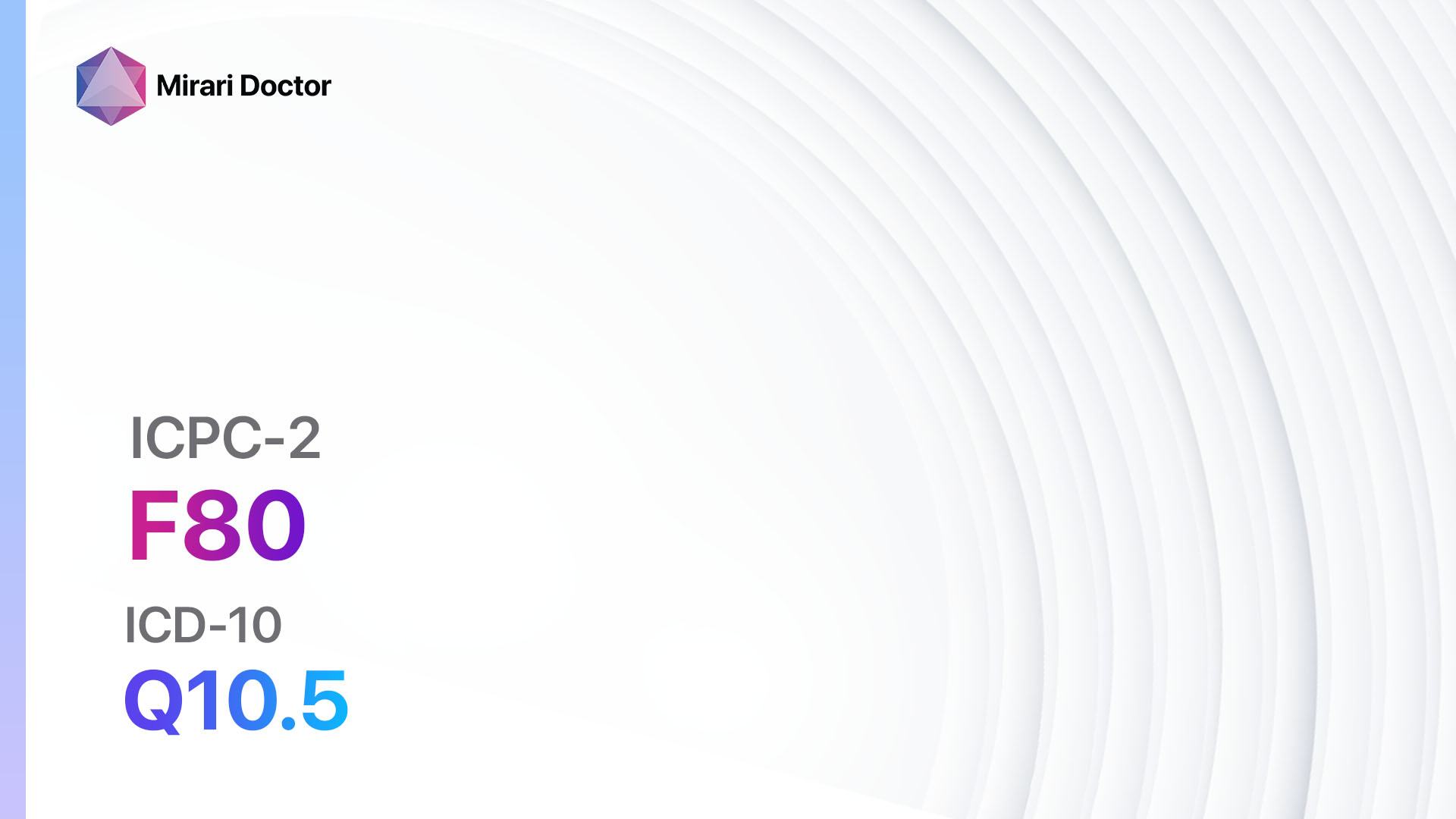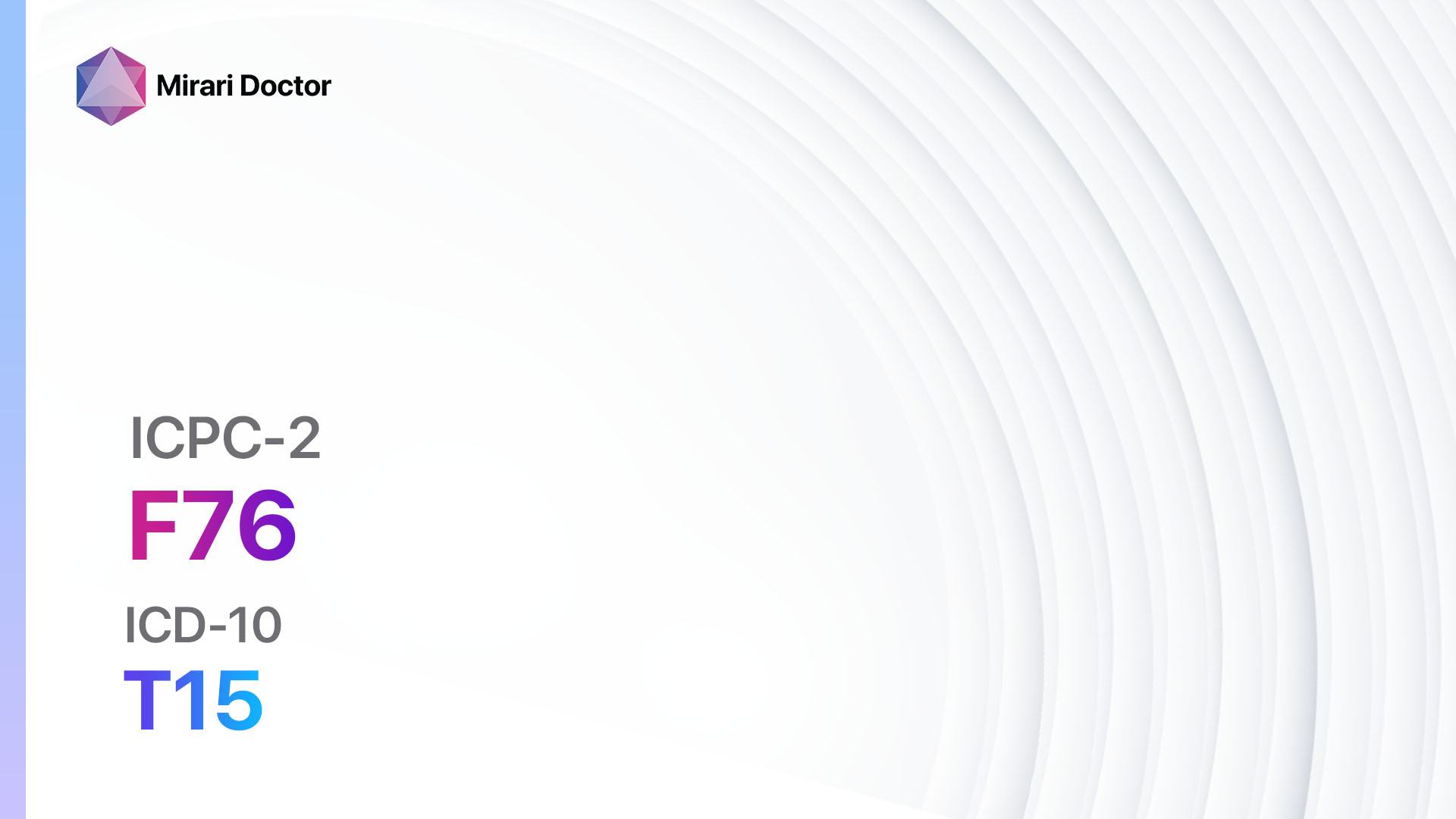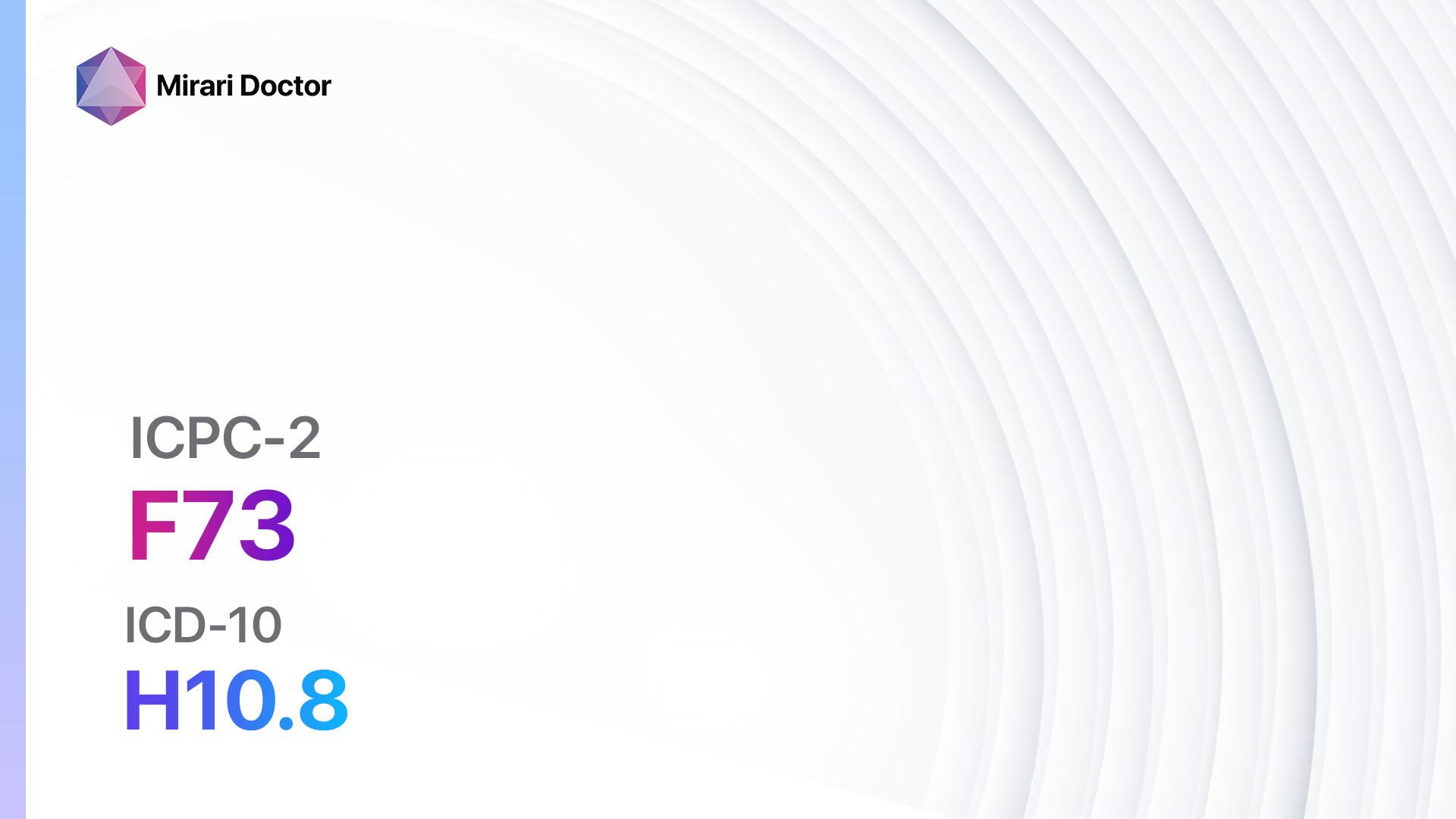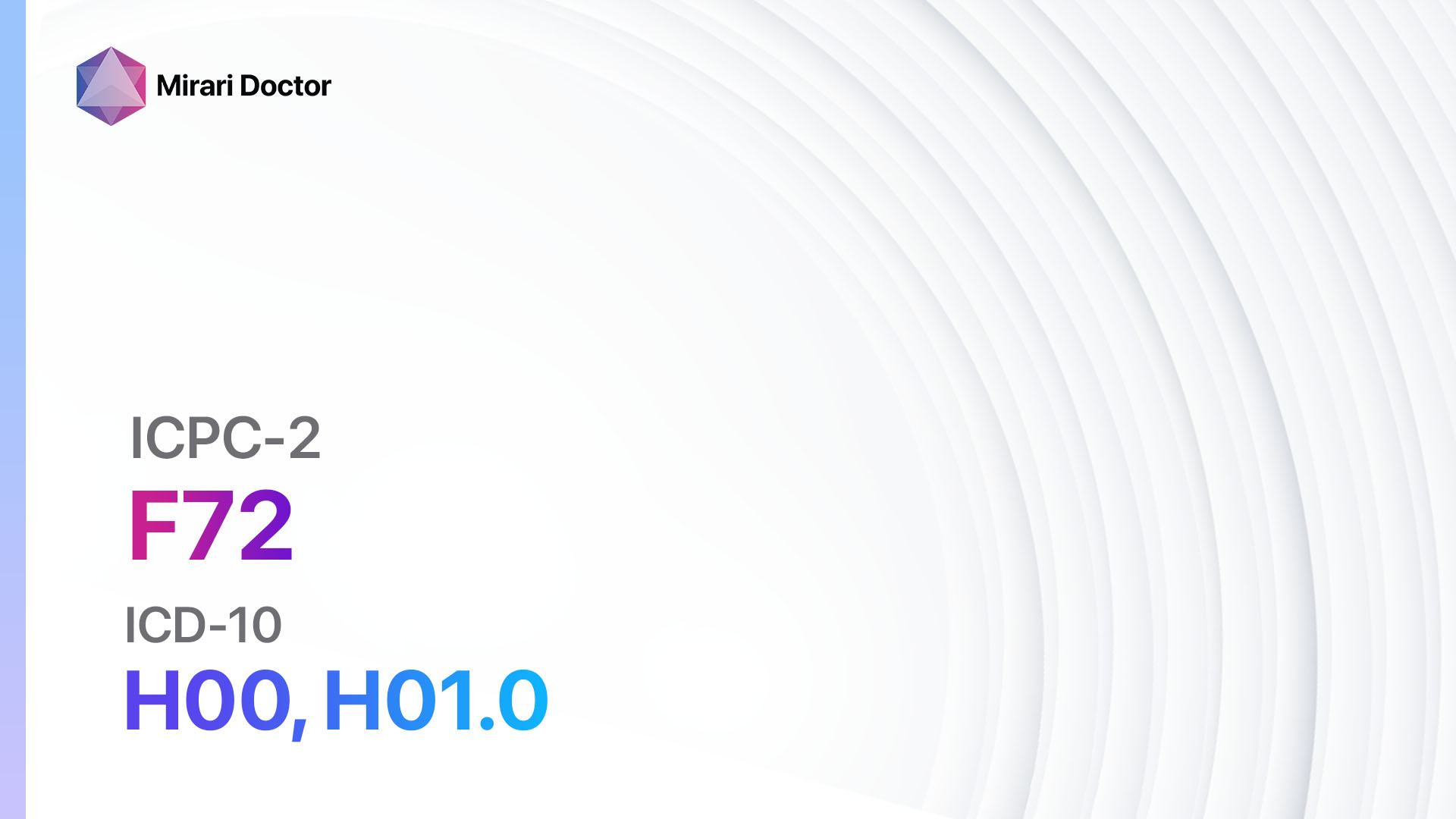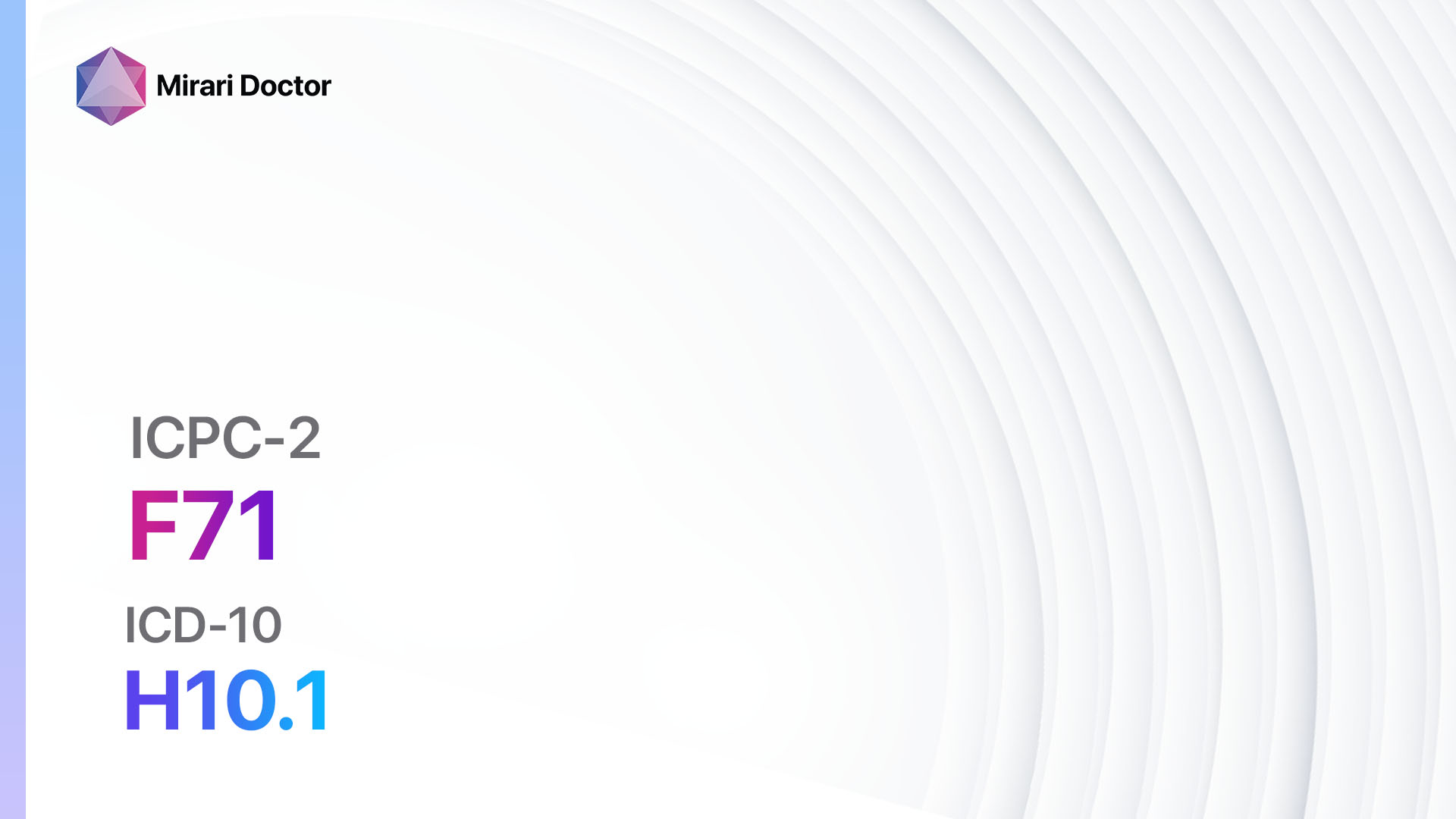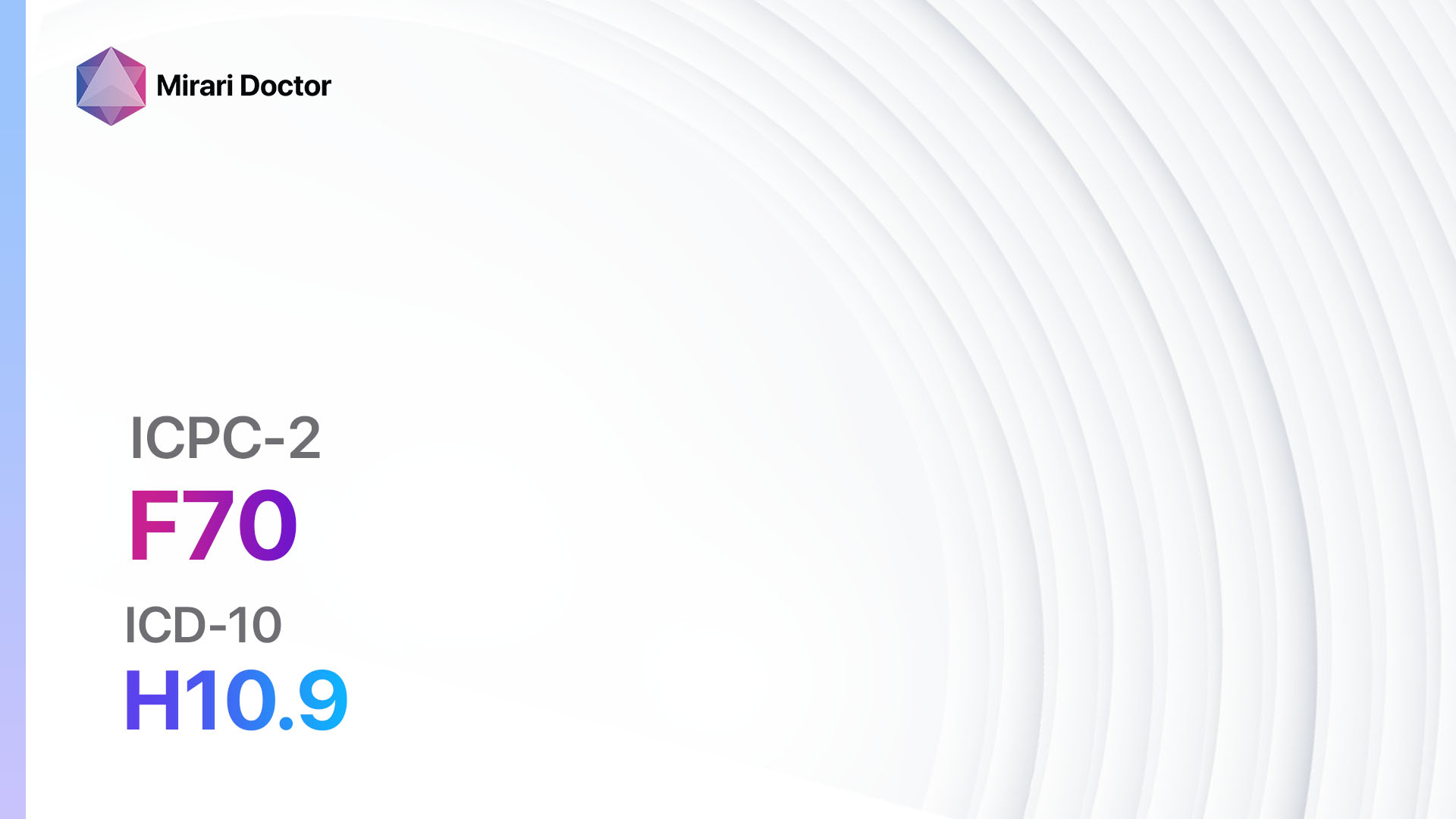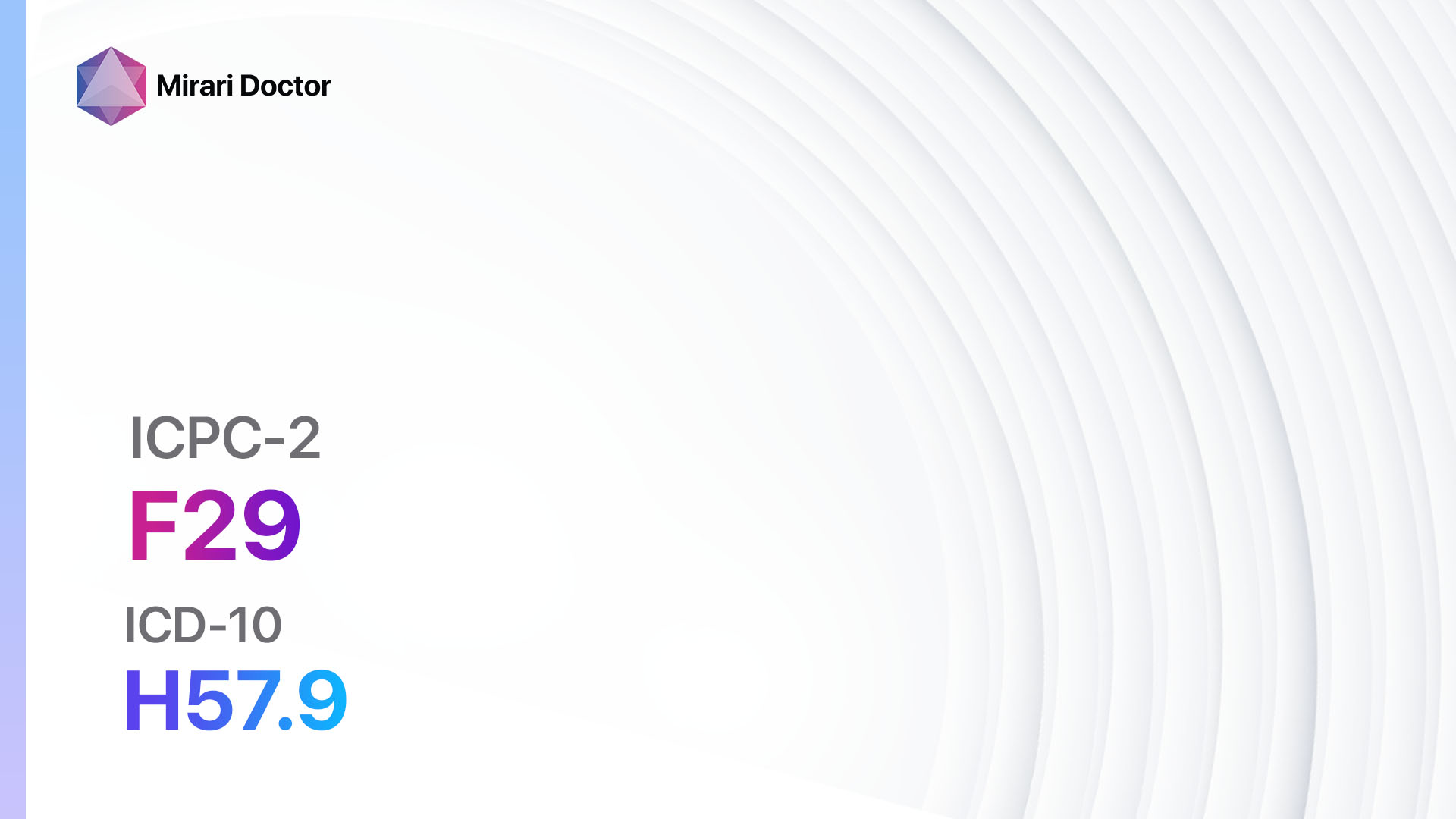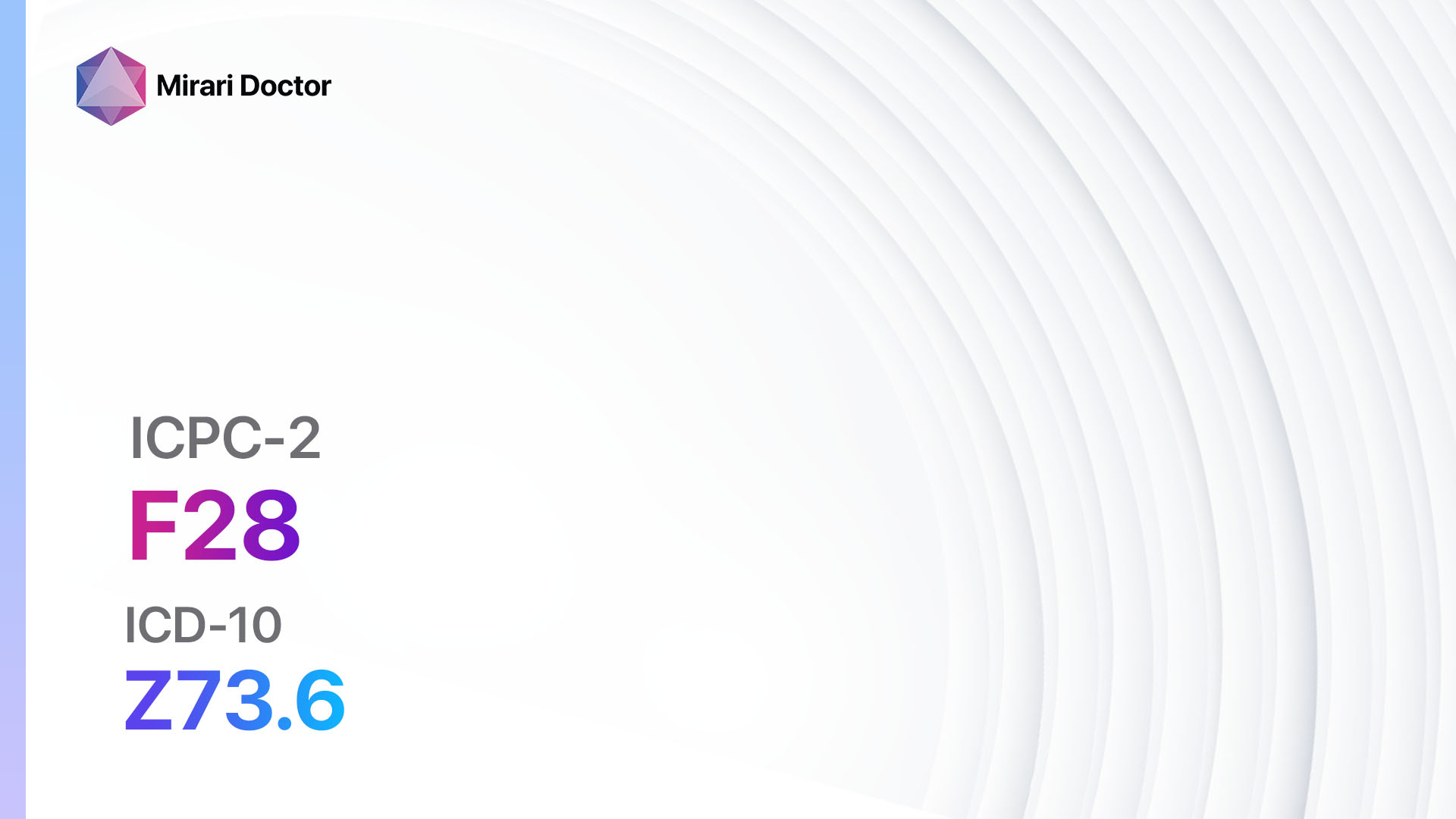
Introduction
Visual floaters/spots are a common visual symptom characterized by the perception of small specks, dots, or cobweb-like shapes that appear to float in the field of vision.[1] These floaters are often more noticeable when looking at a bright background, such as a clear sky or a white wall.[2] While visual floaters are usually harmless, they can be bothersome and may interfere with daily activities.[3] The aim of this guide is to provide a comprehensive overview of the symptoms, causes, diagnostic steps, possible interventions, and patient education related to visual floaters/spots.
Codes
Symptoms
- Floaters: Small specks, dots, or cobweb-like shapes that appear to float in the field of vision.[1][6]
- Spots: Dark or shadowy spots that may move or remain stationary in the visual field.[1][6]
Causes
- Age-related changes in the vitreous humor: As we age, the gel-like substance in the back of the eye called the vitreous humor may become more liquid and develop small clumps or strands. These clumps cast shadows on the retina, leading to the perception of floaters.[1][7]
- Eye injuries or trauma: Injuries to the eye, such as a blow to the head or a direct injury to the eye, can cause floaters.[8]
- Eye surgeries: Certain eye surgeries, such as cataract surgery or retinal detachment repair, can lead to the development of floaters.[8]
- Eye conditions: Certain eye conditions, such as posterior vitreous detachment, retinal tear, or retinal detachment, can cause floaters.[1][9]
- Medical conditions: Some medical conditions, such as diabetes or high blood pressure, may increase the risk of developing floaters.[8]
Diagnostic Steps
Medical History
- Gather information about the patient’s age, medical conditions, and any history of eye injuries or surgeries.[1]
- Ask about the duration and frequency of floaters/spots.[1]
- Inquire about any associated symptoms, such as flashes of light or changes in vision.[1]
- Assess for any risk factors, such as diabetes or high blood pressure.[8]
Physical Examination
- Perform a comprehensive eye examination, including visual acuity testing, intraocular pressure measurement, and examination of the external and internal structures of the eye.[1]
- Dilate the patient’s pupils to allow for a more thorough examination of the retina and vitreous humor.[1]
- Use a slit lamp biomicroscope to examine the anterior segment of the eye, including the cornea, iris, and lens.[1]
- Use an ophthalmoscope to examine the posterior segment of the eye, including the retina and optic nerve.[1]
Laboratory Tests
- No specific laboratory tests are typically required for the diagnosis of visual floaters/spots.[1]
Diagnostic Imaging
- No specific diagnostic imaging modalities are typically required for the diagnosis of visual floaters/spots.[1]
Other Tests
- In some cases, additional tests may be necessary to rule out other underlying eye conditions or to further evaluate the vitreous humor or retina. These tests may include:
- Optical coherence tomography (OCT): A non-invasive imaging test that provides detailed cross-sectional images of the retina and vitreous humor.[10]
- Ultrasound imaging: Used to visualize the structures of the eye when a direct examination is not possible or when there is suspicion of retinal detachment.
Follow-up and Patient Education
- Provide reassurance to the patient that visual floaters/spots are usually harmless and do not typically require treatment.
- Educate the patient about the natural aging process of the vitreous humor and the development of floaters.
- Advise the patient to monitor for any changes in symptoms, such as an increase in the number or size of floaters, the presence of flashes of light, or a sudden decrease in vision.
- Instruct the patient to seek immediate medical attention if any concerning symptoms develop.
Possible Interventions
Traditional Interventions
Medications:
Top 5 drugs for Visual floaters/spots:
- No specific medications are typically prescribed for the treatment of visual floaters/spots.
Alternative Drugs:
- No specific alternative drugs are typically recommended for the treatment of visual floaters/spots.
Surgical Procedures:
- No specific surgical procedures are typically performed for the treatment of visual floaters/spots.
Alternative Interventions
- Acupuncture: May help improve blood flow and reduce symptoms. Cost: $60-$120 per session.
- Chelation therapy: Controversial treatment involving the administration of chelating agents to remove heavy metals from the body. Cost: $75-$150 per session.
- Hyperbaric oxygen therapy: Involves breathing pure oxygen in a pressurized chamber to increase oxygen delivery to tissues. Cost: $200-$300 per session.
- Herbal supplements: Some herbs, such as bilberry or eyebright, may have potential benefits for improving eye health. Cost: Varies depending on the specific supplement.
Lifestyle Interventions
- Maintain a healthy lifestyle: Eating a balanced diet, exercising regularly, and managing chronic conditions, such as diabetes or high blood pressure, may help reduce the risk of developing visual floaters/spots.
- Protect the eyes: Wear protective eyewear when engaging in activities that may pose a risk of eye injury, such as sports or certain occupations.
- Avoid smoking: Smoking has been associated with an increased risk of eye conditions that can lead to floaters.
- Manage stress: Chronic stress may contribute to eye health issues. Engaging in stress-reducing activities, such as meditation or yoga, may be beneficial.
It is important to note that the cost ranges provided are approximate and may vary depending on the location and availability of the interventions.
Mirari Cold Plasma Alternative Intervention
Understanding Mirari Cold Plasma
- Safe and Non-Invasive Treatment: Mirari Cold Plasma is a safe and non-invasive treatment option for various skin conditions. It does not require incisions, minimizing the risk of scarring, bleeding, or tissue damage.
- Efficient Extraction of Foreign Bodies: Mirari Cold Plasma facilitates the removal of foreign bodies from the skin by degrading and dissociating organic matter, allowing easier access and extraction.
- Pain Reduction and Comfort: Mirari Cold Plasma has a local analgesic effect, providing pain relief during the treatment, making it more comfortable for the patient.
- Reduced Risk of Infection: Mirari Cold Plasma has antimicrobial properties, effectively killing bacteria and reducing the risk of infection.
- Accelerated Healing and Minimal Scarring: Mirari Cold Plasma stimulates wound healing and tissue regeneration, reducing healing time and minimizing the formation of scars.
Mirari Cold Plasma Prescription
Video instructions for using Mirari Cold Plasma Device – F04 Visual floaters/spots (ICD-10:H43.3)
| Mild | Moderate | Severe |
| Mode setting: 1 (Infection) Location: 7 (Neuro system & ENT) Morning: 15 minutes, Evening: 15 minutes |
Mode setting: 1 (Infection) Location: 7 (Neuro system & ENT) Morning: 30 minutes, Lunch: 30 minutes, Evening: 30 minutes |
Mode setting: 1 (Infection) Location: 7 (Neuro system & ENT) Morning: 30 minutes, Lunch: 30 minutes, Evening: 30 minutes |
| Mode setting: 2 (Wound Healing) Location: 7 (Neuro system & ENT) Morning: 15 minutes, Evening: 15 minutes |
Mode setting: 2 (Wound Healing) Location: 7 (Neuro system & ENT) Morning: 30 minutes, Lunch: 30 minutes, Evening: 30 minutes |
Mode setting: 2 (Wound Healing) Location: 7 (Neuro system & ENT) Morning: 30 minutes, Lunch: 30 minutes, Evening: 30 minutes |
| Mode setting: 3 (Antiviral Therapy) Location: 7 (Neuro system & ENT) Morning: 15 minutes, Evening: 15 minutes |
Mode setting: 3 (Antiviral Therapy) Location: 7 (Neuro system & ENT) Morning: 30 minutes, Lunch: 30 minutes, Evening: 30 minutes |
Mode setting: 3 (Antiviral Therapy) Location: 7 (Neuro system & ENT) Morning: 30 minutes, Lunch: 30 minutes, Evening: 30 minutes |
| Total Morning: 45 minutes approx. $7.50 USD, Evening: 45 minutes approx. $7.50 USD |
Total Morning: 90 minutes approx. $15 USD, Lunch: 90 minutes approx. $15 USD, Evening: 90 minutes approx. $15 USD, |
Total Morning: 90 minutes approx. $15 USD, Lunch: 90 minutes approx. $15 USD, Evening: 90 minutes approx. $15 USD, |
| Usual treatment for 7-60 days approx. $105 USD – $900 USD | Usual treatment for 6-8 weeks approx. $1,890 USD – $2,520 USD |
Usual treatment for 3-6 months approx. $4,050 USD – $8,100 USD
|
 |
|
Use the Mirari Cold Plasma device to treat Visual floaters/spots effectively.
WARNING: MIRARI COLD PLASMA IS DESIGNED FOR THE HUMAN BODY WITHOUT ANY ARTIFICIAL OR THIRD PARTY PRODUCTS. USE OF OTHER PRODUCTS IN COMBINATION WITH MIRARI COLD PLASMA MAY CAUSE UNPREDICTABLE EFFECTS, HARM OR INJURY. PLEASE CONSULT A MEDICAL PROFESSIONAL BEFORE COMBINING ANY OTHER PRODUCTS WITH USE OF MIRARI.
Step 1: Cleanse the Skin
- Start by cleaning the affected area of the skin with a gentle cleanser or mild soap and water. Gently pat the area dry with a clean towel.
Step 2: Prepare the Mirari Cold Plasma device
- Ensure that the Mirari Cold Plasma device is fully charged or has fresh batteries as per the manufacturer’s instructions. Make sure the device is clean and in good working condition.
- Switch on the Mirari device using the power button or by following the specific instructions provided with the device.
- Some Mirari devices may have adjustable settings for intensity or treatment duration. Follow the manufacturer’s instructions to select the appropriate settings based on your needs and the recommended guidelines.
Step 3: Apply the Device
- Place the Mirari device in direct contact with the affected area of the skin. Gently glide or hold the device over the skin surface, ensuring even coverage of the area experiencing.
- Slowly move the Mirari device in a circular motion or follow a specific pattern as indicated in the user manual. This helps ensure thorough treatment coverage.
Step 4: Monitor and Assess:
- Keep track of your progress and evaluate the effectiveness of the Mirari device in managing your Visual floaters/spots. If you have any concerns or notice any adverse reactions, consult with your health care professional.
Note
This guide is for informational purposes only and should not replace the advice of a medical professional. Always consult with your healthcare provider or a qualified medical professional for personal advice, diagnosis, or treatment. Do not solely rely on the information presented here for decisions about your health. Use of this information is at your own risk. The authors of this guide, nor any associated entities or platforms, are not responsible for any potential adverse effects or outcomes based on the content.
Mirari Cold Plasma System Disclaimer
- Purpose: The Mirari Cold Plasma System is a Class 2 medical device designed for use by trained healthcare professionals. It is registered for use in Thailand and Vietnam. It is not intended for use outside of these locations.
- Informational Use: The content and information provided with the device are for educational and informational purposes only. They are not a substitute for professional medical advice or care.
- Variable Outcomes: While the device is approved for specific uses, individual outcomes can differ. We do not assert or guarantee specific medical outcomes.
- Consultation: Prior to utilizing the device or making decisions based on its content, it is essential to consult with a Certified Mirari Tele-Therapist and your medical healthcare provider regarding specific protocols.
- Liability: By using this device, users are acknowledging and accepting all potential risks. Neither the manufacturer nor the distributor will be held accountable for any adverse reactions, injuries, or damages stemming from its use.
- Geographical Availability: This device has received approval for designated purposes by the Thai and Vietnam FDA. As of now, outside of Thailand and Vietnam, the Mirari Cold Plasma System is not available for purchase or use.
References
- National Eye Institute. (2021). Floaters. https://www.nei.nih.gov/learn-about-eye-health/eye-conditions-and-diseases/floaters
- Mayo Clinic. (2021). Eye floaters. https://www.mayoclinic.org/diseases-conditions/eye-floaters/symptoms-causes/syc-20372346
- Cleveland Clinic. (2021). Eye Floaters: What They Are, Causes & Treatment. https://my.clevelandclinic.org/health/symptoms/14209-eye-floaters-myodesopias
- World Organization of Family Doctors. (2005). International Classification of Primary Care, Second edition (ICPC-2). https://www.who.int/standards/classifications/other-classifications/international-classification-of-primary-care
- World Health Organization. (2019). International Statistical Classification of Diseases and Related Health Problems (ICD-10). https://icd.who.int/browse10/2019/en#/H43.3
- American Academy of Ophthalmology. (2021). What Are Floaters and Flashes? https://www.aao.org/eye-health/diseases/what-are-floaters-flashes
- Milston, R., Madigan, M. C., & Sebag, J. (2016). Vitreous floaters: Etiology, diagnostics, and management. Survey of Ophthalmology, 61(2), 211-227. https://doi.org/10.1016/j.survophthal.2015.11.008
- WebMD. (2021). Eye Floaters: Causes, Symptoms, and Treatment. https://www.webmd.com/eye-health/benign-eye-floaters
- Ivanova, T., Jalil, A., Antoniou, Y., Bishop, P. N., Vallejo-Garcia, J. L., & Patton, N. (2016). Vitrectomy for primary symptomatic vitreous opacities: an evidence-based review. Eye, 30(5), 645-655. https://doi.org/10.1038/eye.2016.30
- Stanga, P. E., Sala-Puigdollers, A., Caputo, S., Jaberansari, H., Cien, M., Gray, J., … & McPherson, A. R. (2020). In vivo imaging of cortical vitreous using 1050-nm swept-source deep range imaging optical coherence tomography. American Journal of Ophthalmology, 217, 198-204. https://doi.org/10.1016/j.ajo.2020.04.008
Related articles
Made in USA



